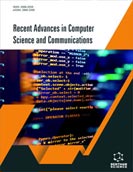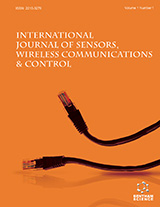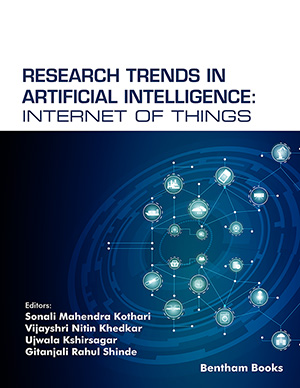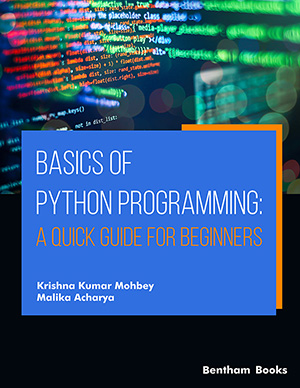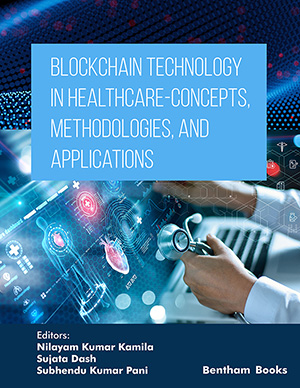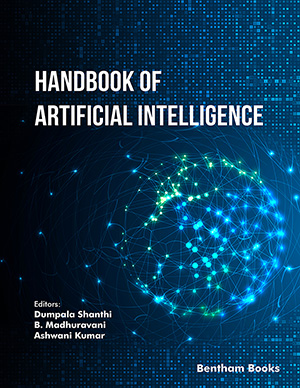Abstract
Background: Early detection of cervical cancer may give life to women all over the world. Pap-smear test and Human papillomavirus test are techniques used for the detection and prevention of cervical cancer.
Objective: In this paper, pap-smear images are analysed and cells are classified using stacked autoencoder based deep neural network. Pap-smear cells are classified into 2 classes and 4 classes. Twoclass classification includes classification of cells in normal and abnormal cells while four-class classification includes classification of cells in normal cells , mild dysplastic cells, moderate dysplastic cells and severe dysplastic cells.
Methods: The features are extracted by deep neural networks based on their architecture. Proposed deep neural networks consist of three stacked auto encoders with hidden sizes 512, 256 and 128, respectively. Softmax used as the outer layer for the classification of pap smear cells. Results: Average accuracy achieved for 2-class classification among normal and abnormal cells is 98.2 % while for 4-class classification among normal, mild, moderate and severe dysplastic cells is 93.8 % respectively.
Conclusion: The proposed approach avoids image segmentation and feature extraction applied by previous works. This study highlights deep learning as an important tool for cells classification of pap-smear images. The accuracy of the proposed method may vary with the different combination of hidden size and number of autoencoders.
Keywords: Deep learning, autoencoders, cervical cancer detection, pap-smear test, image classification algorithms, machine learning techniques.
Recent Advances in Computer Science and Communications
Title:A Stack Autoencoders Based Deep Neural Network Approach for Cervical Cell Classification in Pap-Smear Images
Volume: 14 Issue: 1
Author(s): Sanjay K. Singh*Anjali Goyal
Affiliation:
- Department of Computer Science & Engineering, I.K. Gujral Punjab Technical University, Kapurthala, Punjab,India
Keywords: Deep learning, autoencoders, cervical cancer detection, pap-smear test, image classification algorithms, machine learning techniques.
Abstract:
Background: Early detection of cervical cancer may give life to women all over the world. Pap-smear test and Human papillomavirus test are techniques used for the detection and prevention of cervical cancer.
Objective: In this paper, pap-smear images are analysed and cells are classified using stacked autoencoder based deep neural network. Pap-smear cells are classified into 2 classes and 4 classes. Twoclass classification includes classification of cells in normal and abnormal cells while four-class classification includes classification of cells in normal cells , mild dysplastic cells, moderate dysplastic cells and severe dysplastic cells.
Methods: The features are extracted by deep neural networks based on their architecture. Proposed deep neural networks consist of three stacked auto encoders with hidden sizes 512, 256 and 128, respectively. Softmax used as the outer layer for the classification of pap smear cells. Results: Average accuracy achieved for 2-class classification among normal and abnormal cells is 98.2 % while for 4-class classification among normal, mild, moderate and severe dysplastic cells is 93.8 % respectively.
Conclusion: The proposed approach avoids image segmentation and feature extraction applied by previous works. This study highlights deep learning as an important tool for cells classification of pap-smear images. The accuracy of the proposed method may vary with the different combination of hidden size and number of autoencoders.
Export Options
About this article
Cite this article as:
Singh K. Sanjay *, Goyal Anjali , A Stack Autoencoders Based Deep Neural Network Approach for Cervical Cell Classification in Pap-Smear Images, Recent Advances in Computer Science and Communications 2021; 14 (1) . https://dx.doi.org/10.2174/1389202920666190313163414
| DOI https://dx.doi.org/10.2174/1389202920666190313163414 |
Print ISSN 2666-2558 |
| Publisher Name Bentham Science Publisher |
Online ISSN 2666-2566 |
Call for Papers in Thematic Issues
?The New Era of Computational Intelligence: Big Data Applications in Health Care?
Analyzing healthcare data has remained a tedious task for data analysts in the current age of research due the nonlinear nature of data. With data sources multiplying and their complexity rising, the most common challenge for medical analysts today is obtaining relevant data for those that need it. The challenge ...read more
Advanced Applications of Artificial Intelligence in Manufacturing Technologies
As one of the most advanced fields of study and technology in existence today, artificial intelligence (AI) is finding more and more applications in production and daily life, especially in the industrial sector. This showcases the many applications of AI in mechanical production, including but not limited to: improving worker ...read more
Advancements in AI and Machine Learning for Enhanced Computer Vision Applications
This special thematic issue is meticulously crafted to provide an extensive exploration of the intricate interplay between Artificial Intelligence (AI) and Machine Learning (ML) within the expansive domain of Computer Vision. The scope of this issue is ambitiously designed to cover a diverse range of topics, incorporating cutting-edge research, advanced ...read more
Advancing Computer Vision and Multimedia Communication for Seamless Human-Machine Interaction
The rapid advancements in computer vision and multimedia communication technologies are revolutionizing the way humans interact with machines. These technologies have the potential to enable seamless and natural human-machine interaction, creating new possibilities for communication, collaboration, and entertainment. The findings will have a significant impact on the development of new ...read more
Related Journals
 5
5
- Author Guidelines
- Graphical Abstracts
- Fabricating and Stating False Information
- Research Misconduct
- Post Publication Discussions and Corrections
- Publishing Ethics and Rectitude
- Increase Visibility of Your Article
- Archiving Policies
- Peer Review Workflow
- Order Your Article Before Print
- Promote Your Article
- Manuscript Transfer Facility
- Editorial Policies
- Allegations from Whistleblowers
Related Articles
-
Extranodal Marginal Zone B-Cell Lymphoma of Mucosa Associated Lymphoid Tissue Presenting as Multiple Pulmonary Lesions: Case Report and Review of the Literature
Current Respiratory Medicine Reviews Targeting Invasion Induction as a Therapeutic Strategy for the Treatment of Cancer
Current Cancer Drug Targets Methionine AminoPeptidase Type-2 Inhibitors Targeting Angiogenesis
Current Topics in Medicinal Chemistry Interleukin-6: A Critical Cytokine in Cancer Multidrug Resistance
Current Pharmaceutical Design The Mechanism of Adjuvanticity of Aluminium-Containing Formulas
Current Pharmaceutical Design Discovery of Hedgehog Antagonists for Cancer Therapy
Current Medicinal Chemistry Tumor Stroma Manipulation By MSC
Current Drug Targets Inhibition of Growth of Esophageal Cancer by Alantolactone via Wnt/β- Catenin Signaling
Anti-Cancer Agents in Medicinal Chemistry Beyond Stressed Self: Evidence for NKG2D Ligand Expression on Healthy Cells
Current Immunology Reviews (Discontinued) Non-Invasive Imaging of Complicated Osteomyelitis: The Added Value of Scintigraphic Techniques
Current Radiopharmaceuticals uPAR as Anti-Cancer Target: Evaluation of Biomarker Potential, Histological Localization, and Antibody-Based Therapy
Current Drug Targets Application of a Deep Matrix Factorization Model on Integrated Gene Expression Data
Current Bioinformatics Clinical Approaches Toward Tumor Angiogenesis: Past, Present and Future
Current Pharmaceutical Design Small-Molecule Inhibitors Targeting eIF4A in Leukemia
Current Protein & Peptide Science The Endocannabinoid System in the Cancer Therapy: An Overview
Current Medicinal Chemistry Epigenetic and miRNAs Dysregulation in Prostate Cancer: The role of Nutraceuticals
Anti-Cancer Agents in Medicinal Chemistry Microenvironmental Determinants of Adult Neural Stem Cell Proliferation and Lineage Commitment in the Healthy and Injured Central Nervous System
Current Stem Cell Research & Therapy The use of Azoles Containing Natural Products in Cancer Prevention and Treatment: An Overview
Anti-Cancer Agents in Medicinal Chemistry MicroRNA-372-3p Predicts Response of TACE Patients Treated with Doxorubicin and Enhances Chemosensitivity in Hepatocellular Carcinoma
Anti-Cancer Agents in Medicinal Chemistry Application of Recombinant and Non-Recombinant Peptides in the Determination of Tumor Response to Cancer Therapy
Current Pharmaceutical Biotechnology


